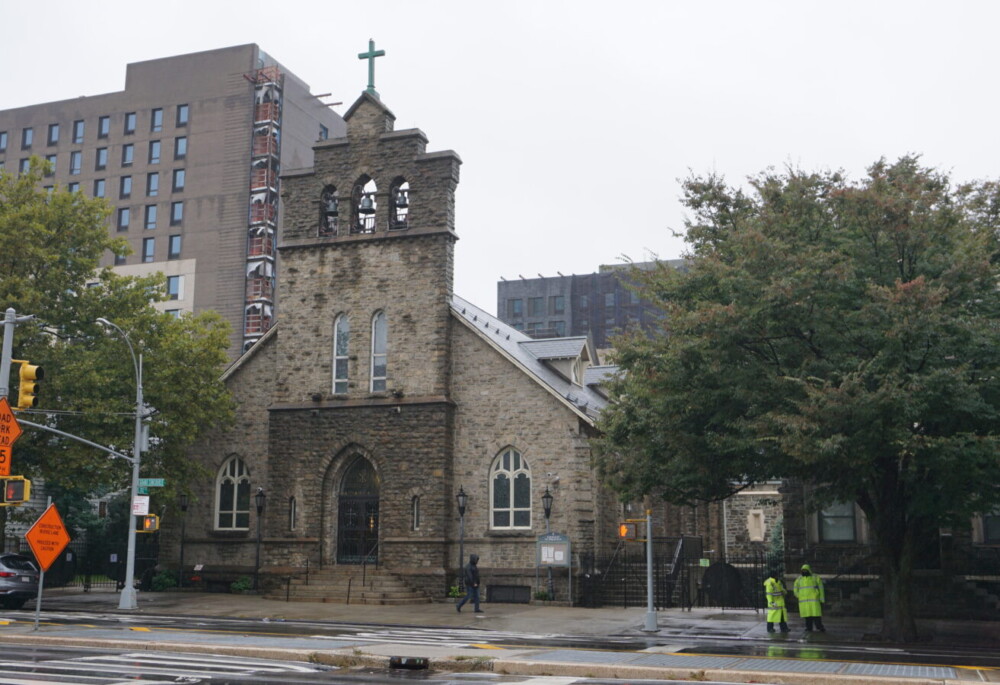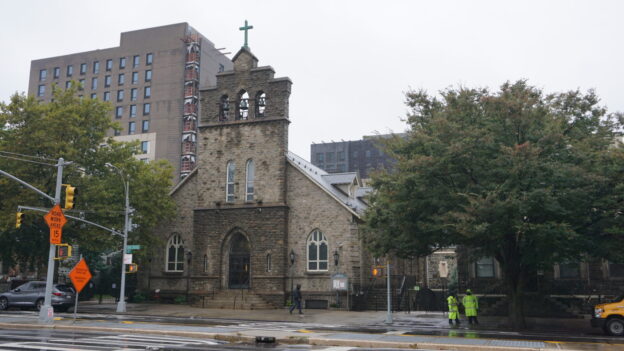In the 1850s, the neighborhood now known as Bedford Park was part of the property owned by financier and noted sportsman Leonard Jerome, Winston Churchill’s grandfather. He leased a section of it for use as a race track and, to ensure accessibility and promote development, lobbied for a paved boulevard and began selling off his other Bronx properties. By the 1870s, streets were laid out and blocks were subdivided into house lots, but construction didn’t take off until the early 1880s. Early developments were primarily free-standing wood-frame homes, soon followed by religious architecture and infrastructure. Some of the oldest surviving examples of these buildings include houses at Bainbridge Avenue & E 201st Street, the Bedford Park Congregational Church, the Convent of Mount St. Ursula and the former Beford Park Railroad Station .
By the early-20th century, transportation improvements such as the extension of elevated lines to nearby Fordham Road, and construction of the Mosholu Parkway, had expanded the boundaries of the neighborhood and increased the population drastically. This fueled residential development and also prompted the construction of new facilities for city services, like the NY Fire Department and the NYPD . Several prestigious educational institutions were also created, with buildings located in an area referred to as the Educational Mile. These include DeWitt Clinton and the Bronx High School of Science, along with Lehman College.
However, the most significant project in the neighborhood’s development was the construction of the Jerome Park Reservoir, transforming the former racetrack at Jerome Park into a fresh-water reservoir for the New Croton Aqueduct. Completed in 1906, it became a valuable asset for the rapidly growing City of New York and provided residents with recreational open space. The project also shaped demographics, as the Italian and Irish immigrants who worked on it relocated to the area and built neighborhood staples like the St. Philip Neri Roman Catholic Church.
Bedford Park continued to grow throughout the 20th century, especially after WWI. During this time, it began to shift from a quiet suburb into a more densely populated urban area. Within 20 years of the completion of the Grand Concourse, apartment buildings featuring the then fashionable architectural styles lined the boulevard and the surrounding areas, replacing single-family houses. This type of development would continue throughout the 1950s, but the neighborhood never lost its bucolic character and ethnic diversity.
Today, Bedford Park is facing significant development pressures, with many of the early free-standing houses already lost to out-of-scale development. Community groups and organizations are working to raise awareness on the area’s history and significance, in order to protect its character and the neighborhood from.


